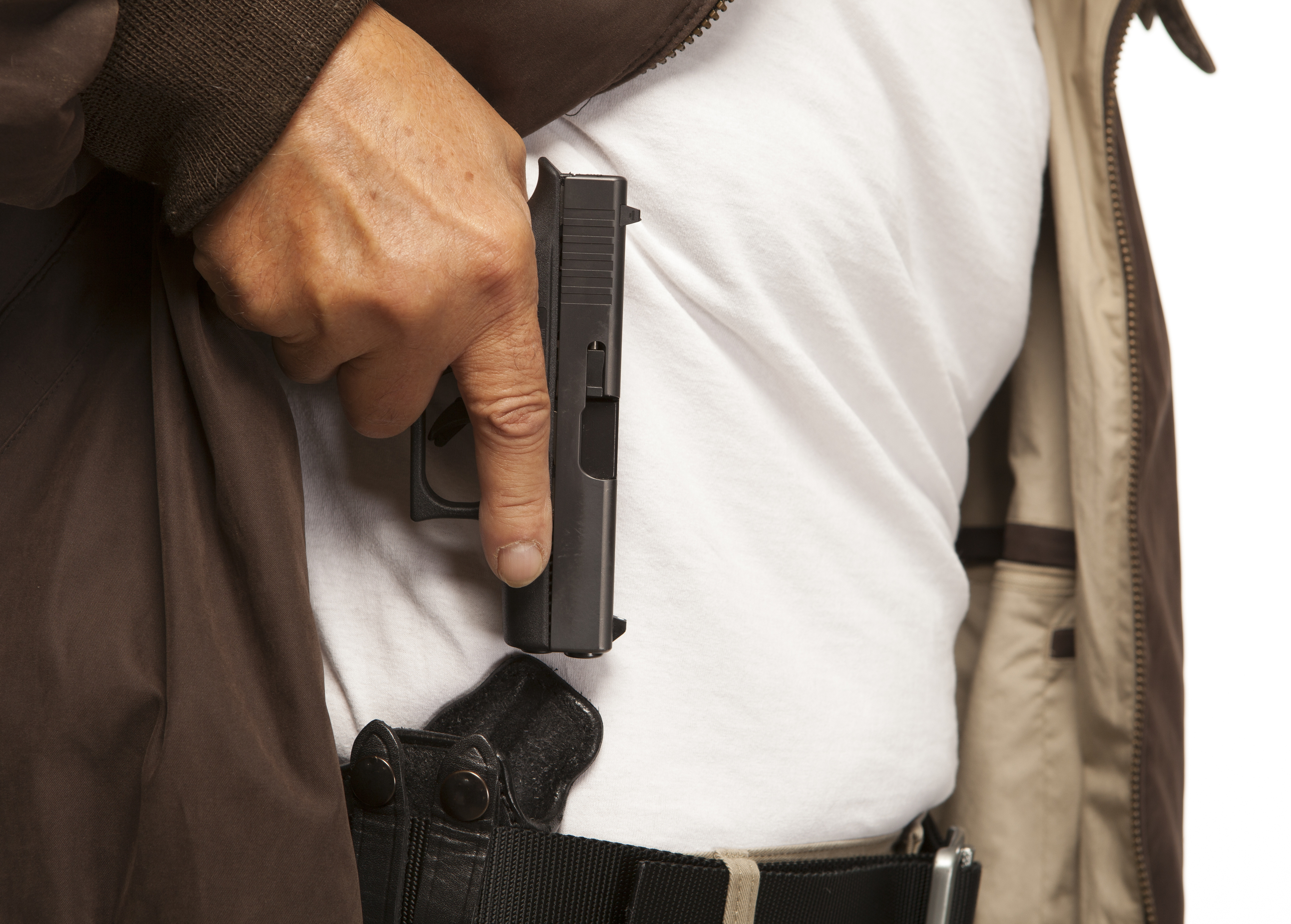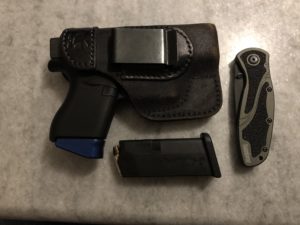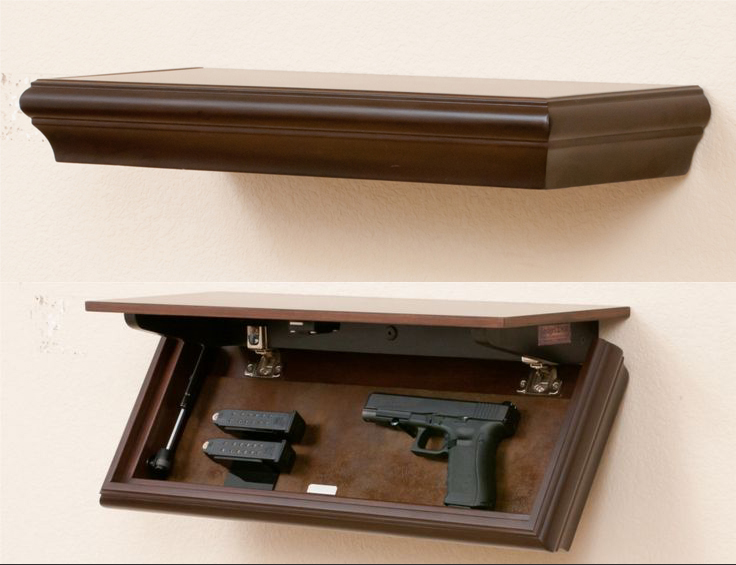
02 Jan Best Tips on Personal and Home Defense
It’s not easy understanding that you and your home are targets for criminals but as they say, “An ounce of prevention is worth a pound of cure.” I never thought anyone would break into my house or my apartments, but it happened.Growing up, my dad always taught me firearms are a tool as well as everything else – knives, pepper spray, etc. They’re only as good as you know how to use them. Needless to say, preparedness is now priority one.
Preparing your mind is the first step towards being ready in a defensive situation. We all have someone or something we would protect at all costs. Knowing why you are carrying is a good place to start. If you don’t think you could shoot in a situation, you have to think of who you would be protecting. Would you do anything for your defenseless son who is asleep in his bed? The person coming in to your home or attacking you isn’t going to question their morals or stop. You have to ask yourself, what would you do to save your or a loved one’s life.
From there, it’s making the decision to equip yourself and train with your firearm.
Carrying concealed is not something I take lightly. I realized early on from my experiences that police can’t be everywhere at once. When I’m alone, the only person that can help me is myself. I also realized that if I rely on others, I’m asking them to sacrifice their life to save mine when I am capable of defending myself. Your home defense is just as important in your preparation.
How Do You Prepare for Real Life Home Defense Situations?
Carry with a Round in the Chamber
Controversial, I know. There’s a big debate in the gun world about whether or not to carry with a round in the chamber. I’ve never known a time when I didn’t have a fully-loaded gun ready to go. The time it takes to rack your slide is costly and if you sometimes have one in the chamber and sometimes don’t, you’ll never remember when it matters. It doesn’t matter if you have a round in the chamber if you practice proper firearm handling and always treat a firearm as if it’s loaded. When you choose to carry, carry with a round in and you’ll never have to re-learn anything.
Think Strategically When You’re in Public
Situational awareness is so important wherever you go these days. When you go out to eat, do you think about where you sit? I sit on the side with a clear view of the exit or the path to the exit. If I can get a corner booth or table where I have no one behind me, that’s where I like to be. The reason for this is so you can see everyone and what’s going on. When you’re in big crowds (whether you can carry or not), do you check your surroundings? If I’m at a concert I enjoy myself but I also take note of all of the exits and tend to stand towards a side in case of an emergency. Where do you sit in a movie theater? I look for a quick way to the aisle, a place to hide if needed, and close proximity to an exit. In unfamiliar places, I like to take a trip to the restroom and on my way, check out the vicinity. We’ve seen and heard of the latest occurrences in public places. You have to train your brain to always be alert in public and be aware of your surroundings. Think of “if – then” scenarios. If someone attacks another person, then what are you going to do? This is especially important when including family members and friends. My family and friends know where I like to sit and why I sit where I do. They may not choose to carry, but I do and so it’s my responsibility to be on alert. They know that if something happens, they aren’t to get in the way or in front of my line of sight. Have these conversations with others so there’s a plan in place.
Practice With Your Firearm
The very first thing I practiced when I started carrying was drawing from a holster with an unloaded firearm. I carry using an in the waistband (IWB) holster so I had to learn how to use my non-dominant, left hand to pull any clothes out of the way, while grabbing my pistol with my right hand without looking for the grip. Your eyes should always be on your attacker so finding your firearm should become second nature to you. If you carry with your pistol in the small of your back for example or in a concealed carry purse, practice finding your grip and getting your pistol out safely. There is no set number of times you should do this, but keep practicing until it’s ingrained in your brain. Continue to practice at home, on the range, and never stop practicing.
Once I got comfortable with the deployment, I practiced that first trigger pull once the firearm was in hand. I practiced on silhouette targets from 5 yards, 7 yards, and 10 yards. That first shot may be the only opportunity that you have. Aim for center mass each time. If your range is open past sunset, I recommend practicing in the dark or at dusk. The more opportunities that you have to train in different conditions, the better. I then practiced shooting with my dominant hand alone and then with my non-dominant hand alone. Think about how often we are carrying something in our hands – purses, groceries, maybe a small child, a dog leash, etc. Get comfortable doing the uncomfortable by practicing one-handed shooting with your non-dominant as well. I then added in taking a step backwards and eventually many steps as a I shot. Close proximity shooting is what most situations call for so adding space between you and your attacker while shooting is a good thing to practice. Practice shooting with full metal jackets, but also with the hollow points you carry with. There is a different recoil and you don’t want that to surprise you when you need it most.
How Do you Prepare Your Home for Defense?
Strategically Place Your Firearms In Your House
Depending on what firearms you own, if you don’t carry throughout your house, it’s a good idea to strategically place your firearms throughout rooms for when you need it most. You’ll always find a pump action shotgun next to my bed. It’s a great home defense gun, large enough to grab in the dark, and covers a wide area. I also use night sights on all my home defense guns. My backup firearm is my Glock 17 I keep on my nightstand. I also keep a flashlight next to it if needed, but you know your house better than an intruder so using a light isn’t something I recommend. Where you’re most vulnerable is your bathroom, but because of the amount of moisture, I recommend carrying a firearm into your bathroom. I keep a loaded revolver in a cabinet in my kitchen where no guest would look for something. It’s a great central place for me to keep a go-to firearm in case of entry by the front door, back door, or garage door. When you look to place a firearm, consider a location where you can grab your firearm, find cover, and get a line of sight to your doorway or window where an intruder would come in. Most of us spend a lot of time in our living area with the TV. I recommend purchasing a concealable shelf, coffee table, or other item that is designed for easy access to your firearm. If you don’t have a lot of firearms, get comfortable carrying concealed at home.
Don’t Post on Social Media
Checking in on Facebook and talking about your planned vacation on social media seems harmless, but nowadays, there is no online security. When you make a post talking about not being home, you’re putting a target on your back. How my house was broken into leaves me with no doubt in my mind that it was a friend or family member who has been over before. They knew what items to take, where they were located, and how to get into the house with the least amount of damage. If you always leave your front door unlocked or garage door unlocked, that habit is known to other people. Get used to having to lock up your house all the time.
Invest in Home Defense Technology
Some of the simplest things I’ve done is added motion sensor flood lights and a live video feed front door bell. You want to add as many layers of security that would deter a criminal of even thinking of trying to break in. If you have a larger budget, investing in a home security system is a great idea. When I was at college, I used cheap laser sensors that went on the door jam and the door itself. If the laser line was broken (when the door was opened), this alarm would sound. The purpose of it was to wake me and to scare a criminal off. It gave me more peace of mind knowing there was some option out there to help. When you know you’ll be out late, light switch timers are a cheap way to turn on lights and give the illusion that someone is home. You can use them to turn on your TV or a radio as well.
Eventually, carrying concealed will become habit where you won’t have to think when you need to react. Every trip you make to a range, you should do a couple drills and shoot some rounds through your concealed carry firearm. Dry fire when you’re at home and practice moving to your go-to firearm and finding cover. The more you practice, the more it becomes instinct so you’re not panicking in the moment. If you have roommates or family members, share with them where your firearms are and make a plan in case of an emergency.
About the author: Kenzie grew up hunting and fishing with her grandfathers and dad in Florida, Alabama, and Louisiana. After a quick Google search, Kenzie found the Rifle Association at Florida State University and landed a spot on the pistol team. She quickly took up competitive shooting and now shoots GSSF, USPSA, Cowboy Action, 3-gun, 2-gun, Steel Challenges, and is always looking for more! Her favorite pistol is the Gen2 Glock 17 her dad gave to her as her first firearm, favorite rifle a Daniel Defense V7 she purchased for her birthday, and favorite shotgun an SKB 100 that is no longer made. Her passion is teaching others to shoot and bringing more people to competitions.






No Comments